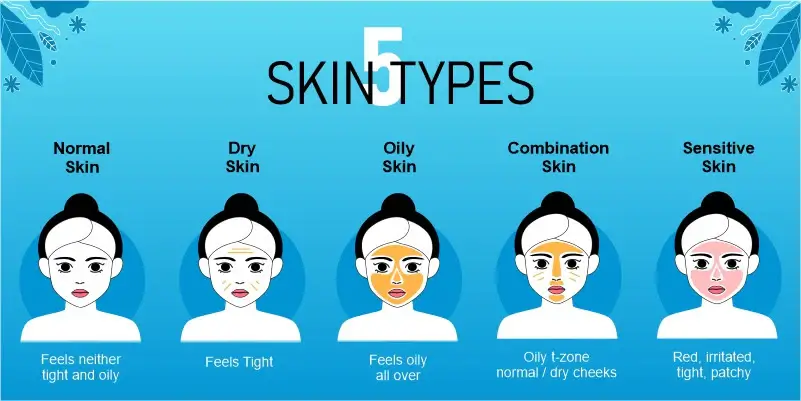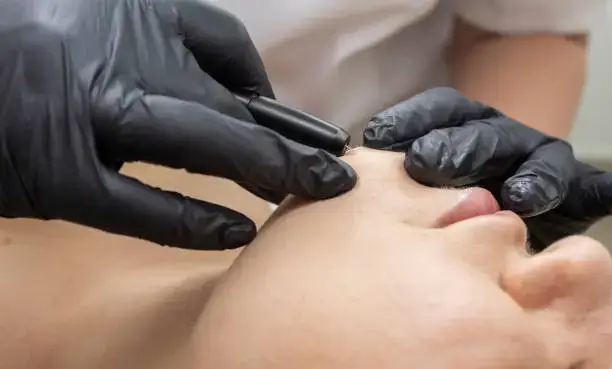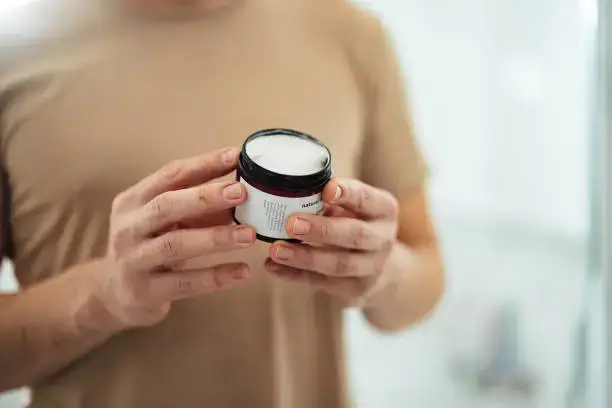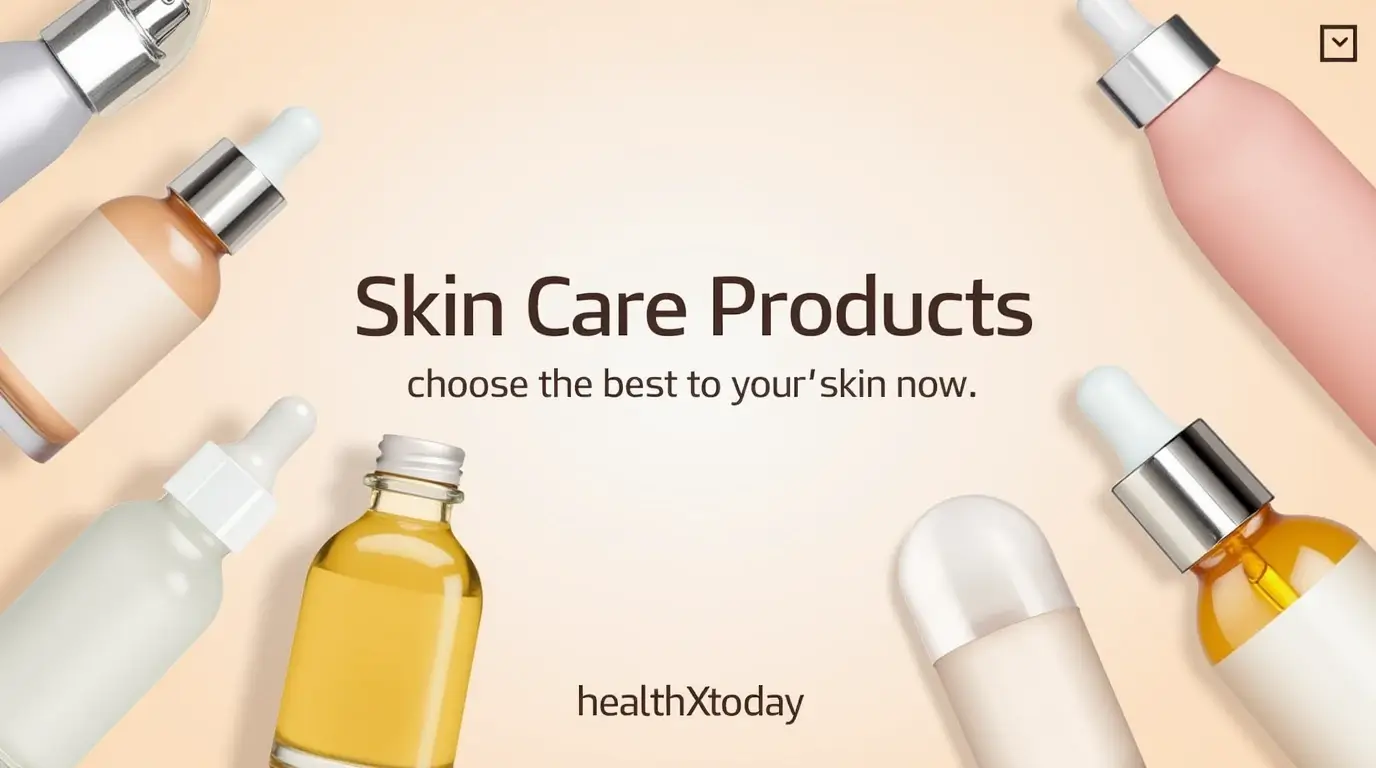We envision a world where everyone has the tools and knowledge to live a balanced, healthy, and fulfilling life. By providing reliable resources, personalized programs, and community support, we aim to be a beacon of hope for those on their health journey.
Table of Contents
Understanding Your Skin Type

Recognizing your skin type is a vital initial step in the process of selecting the appropriate skin care products. Each person’s skin can be categorized into one of four primary types: oily, dry, combination, and sensitive. korean skin care; now Understanding these distinct categories not only assists in product selection but also enhances your overall skin health.
Oily skin typically exhibits excess sebum production, resulting in a shiny appearance and enlarged pores. Individuals with this skin type may be more prone to acne and blemishes. On the other hand, dry skin is characterized by a lack of moisture, often leading to flakiness, tightness, and irritation. For those with dry skin, the use of hydrating and moisturizing products is crucial.
Combination skin presents a unique challenge as it features characteristics of both oily and dry skin. For instance, the T-zone—forehead, nose, and chin—may be oily, while the cheeks remain dry. Products designed for combination skin often incorporate beneficial properties to address both issues effectively. Sensitive skin, conversely, is prone to reactions such as redness, burning, or irritation. This skin type requires gentle, hypoallergenic products that avoid harsh ingredients.
To accurately assess your skin type, conduct a simple test by observing your skin’s behavior after cleansing. Allow your skin to rest for about an hour without applying any products. If it feels tight and looks flaky, you likely have dry skin. If it appears shiny and oily, especially in the T-zone, your skin might be classified as oily. Combination skin exhibits varying areas, while sensitive skin will show reactions such as redness or itching. Understanding these characteristics is essential because it enables the use of skin care products that match your skin’s specific needs. Selecting the right products tailored to your skin type can dramatically impact your skincare routine’s effectiveness and enhance overall skin health.
Essential Skin Care Ingredients to Look For
Understanding the composition of skin care products can significantly enhance your skin health. With an array of ingredients available, it is crucial to know which ones are beneficial for your specific skin concerns. Here are some essential ingredients to consider when choosing skin care products.
Firstly, hyaluronic acid is a powerful humectant that attracts moisture to the skin. It can hold up to 1000 times its weight in water, making it an excellent choice for hydrating dry skin. This ingredient works well in serums and moisturizers and is suitable for all skin types. By promoting hydration, hyaluronic acid helps in diminishing the appearance of fine lines and improving skin texture.
Next, retinol, a derivative of vitamin A, is widely celebrated for its anti-aging properties. It accelerates cell turnover, promoting the shedding of dead skin cells and the growth of new ones. With consistent use, retinol can help reduce the appearance of wrinkles, fine lines, and even hyperpigmentation. However, it may cause irritation for sensitive skin types, so it is recommended to start with a lower concentration.
Another essential ingredient is Vitamin C, known for its antioxidant properties. This vitamin helps to protect the skin from environmental damage caused by free radicals. Furthermore, Vitamin C brightens the skin tone, reduces dark spots, and promotes collagen production, making it a vital component for those seeking a more youthful appearance.
Lastly, peptides are small chains of amino acids that play a key role in building proteins such as collagen and elastin. These ingredients support skin firmness and elasticity, helping to reduce sagging and wrinkles. Peptides can be particularly beneficial for mature or aging skin, making them a popular choice in skin care formulations.
By familiarizing yourself with these essential skin care ingredients, you can make informed choices that align with your skin care goals and conditions. This knowledge empowers you to select products that not only improve your skin’s health but also enhance its overall appearance.
The Role of Moisturizers in Skin Care

Moisturizers play an indispensable role in any skin care regimen, as they are designed to hydrate, protect, and enhance the skin’s natural barrier. Regardless of skin type, incorporating a suitable moisturizer can lead to noticeable improvements in skin appearance and health. The primary function of moisturizers is to maintain optimal hydration levels, which is vital for healthy skin. Hydrated skin is more elastic, less prone to irritation, and exhibits a natural glow.
There are various types of moisturizers available, each catering to specific skin types and concerns. Creams are typically thicker and offer intensive hydration, making them ideal for dry or mature skin. On the other hand, lotions have a lighter consistency and are better suited for normal to combination skin, providing adequate moisture without feeling heavy. For individuals with oily or acne-prone skin, gels can be particularly beneficial, as they are lightweight and often formulated with ingredients that help control excess oil while delivering hydration.
When applying moisturizers, it is essential to follow a few key steps to maximize their effectiveness. Firstly, apply the product on damp skin to help lock in moisture. This is particularly important after cleansing, as the skin is more receptive to hydration at this time. Gently massaging the moisturizer into the skin in upward circular motions can also enhance absorption and stimulate circulation. Additionally, choosing a moisturizer that contains beneficial ingredients such as hyaluronic acid, glycerin, or ceramides can significantly enhance its hydrating effects and support the skin’s barrier functions.
In conclusion, the role of moisturizers in skin care cannot be overstated. They provide essential hydration, protection, and support to the skin barrier, helping to achieve and maintain optimal skin health. By selecting the right type of moisturizer and applying it correctly, individuals can foster a healthier complexion that looks and feels revitalized.
How to Incorporate Sunscreen into Your Routine
Sunscreen is an essential component of any skin care regimen, offering vital protection against the harmful effects of ultraviolet (UV) rays. Regular use of sunscreen can significantly reduce the risk of skin damage, including premature aging and skin cancer. It is imperative to choose a product that best suits your skin type and lifestyle, as there are two primary categories of sunscreen: chemical and physical. Chemical sunscreens absorb UV rays through chemical ingredients, whereas physical (or mineral) sunscreens contain active mineral ingredients such as zinc oxide or titanium dioxide, which create a barrier on the skin’s surface to reflect UV rays.
When choosing a sunscreen, consider factors like skin type, sun exposure levels, and personal preferences. Broad-spectrum formulations, which protect against both UVA and UVB rays, are particularly recommended. Aim for a sunscreen with a sun protection factor (SPF) of at least 30 for daily use; however, higher SPFs provide additional protection. Always check for non-comedogenic options if you are prone to acne or sensitive skin.
Application technique plays a crucial role in efficacy. Apply sunscreen generously and evenly to all exposed skin at least 15 minutes before sun exposure to allow for proper absorption. Reapplication every two hours, or more frequently after swimming or sweating, is vital for continued protection. Despite widespread misconceptions, sunscreen should be used year-round, even on cloudy days or indoors, as UV rays can penetrate windows. Incorporating sunscreen into your daily routine is essential for maintaining healthy skin and preventing long-term damage.
Targeting Specific Skin Concerns with Treatments

Skincare is not a one-size-fits-all approach; different skin concerns require tailored treatments to effectively address them. Among the most common issues individuals face are acne, hyperpigmentation, and signs of aging. Understanding how to choose the right products can significantly enhance the effectiveness of a skincare regimen.
For those struggling with acne, specialized treatments such as salicylic acid serums and benzoyl peroxide spot treatments are particularly effective. Salicylic acid works by deep cleaning pores and reducing inflammation, while benzoyl peroxide helps to kill acne-causing bacteria. Both options are readily available and can often be incorporated into a daily routine. Additionally, clay masks serve as an excellent choice for detoxifying the skin and absorbing excess oil, further assisting in the fight against breakouts.
Hyperpigmentation, marked by dark spots and uneven skin tone, can also be effectively targeted with specific products. Ingredients such as niacinamide, vitamin C, and alpha hydroxy acids (AHAs) have been scientifically proven to brighten the skin and reduce the appearance of discoloration. Serums containing these ingredients can be applied directly to affected areas or used all over the face to achieve a more uniform complexion. Weekly exfoliating masks can also help by removing dead skin cells and promoting new cell turnover, ultimately aiding in the fading of pigmented areas.
For aging concerns, incorporating retinoids into one’s skincare routine can make a significant impact. Retinol serums improve skin texture, reduce fine lines, and promote collagen production. Additionally, hyaluronic acid-based products can help maintain skin hydration, giving a plumper and more youthful appearance. Combining these treatments with regular use of peptides in creams and serums can enhance results, promoting firmer skin over time.
By understanding specific treatments for various skin concerns, individuals can create an effective skincare regimen that maximizes results. Tailoring product choices to address specific issues not only improves skin health but also boosts confidence in one’s appearance.
The Benefits of Regular Exfoliation
Exfoliation is an essential step in any comprehensive skin care regimen, as it aids in the removal of dead skin cells that can accumulate on the skin’s surface. By regularly exfoliating, individuals can promote cellular turnover, resulting in a smoother and more radiant complexion. This process not only enhances the appearance of the skin but also allows for better absorption of other skin care products, such as moisturizers and serums, which can penetrate more effectively into freshly exfoliated skin.
There are two main types of exfoliants: physical and chemical. Physical exfoliants, such as scrubs and brushes, manually remove dead skin cells through gentle abrasion. They often contain granules or particles that help buff away the surface layer. While physical exfoliation can deliver immediate results, it is crucial to use these products with care to avoid damaging the skin or provoking irritation. A frequency of once to twice a week is generally recommended for most skin types, depending on individual skin sensitivity.
On the other hand, chemical exfoliants utilize various acids, such as alpha hydroxy acids (AHAs) and beta hydroxy acids (BHAs), to dissolve the bonds that hold dead skin cells together. This type of exfoliation can provide a more even and consistent result without the physical scrubbing associated with manual methods. Chemical exfoliants are ideal for individuals struggling with acne, uneven texture, or hyperpigmentation. Incorporating them into a skin care routine should be done gradually, starting with once a week and potentially increasing to two to three times per week as the skin builds tolerance.
To effectively integrate exfoliation into your weekly routine, it is advisable to choose products specifically formulated for your skin type, taking care to monitor how your skin reacts. Maintaining a balance is key; over-exfoliation can lead to inflammation or irritation, undermining the desired effects of healthier, more vibrant skin.
Understanding Skin Care Labels and Product Claims

Navigating the intricate world of skin care can be a daunting task, particularly with the myriad of product labels and claims that bombard consumers. Understanding skin care labels is essential for selecting products that suit individual needs and skin types. When evaluating a product, start by examining the ingredient list, which is typically arranged in descending order based on the quantity of each component. Ingredients listed at the top are present in more significant concentrations, while those at the bottom are in smaller amounts.
Be mindful of specific terms that often appear on skin care labels, as they provide insights into the product’s formulation. For example, a product labeled as ‘non-comedogenic’ is formulated to avoid clogging pores, making it ideal for those with acne-prone skin. On the other hand, ‘hypoallergenic’ suggests a reduced likelihood of causing allergic reactions, although it is essential to remember that individual skin responses can vary.
Another common claim is ‘dermatologist-tested,’ which indicates that a dermatologist has evaluated the product, though it does not guarantee it will be suitable for every skin type. When encountering marketing terms, it is crucial to view them with a critical eye, as they may not always be backed by rigorous scientific evidence. For instance, terms like ‘natural’ or ‘organic’ are often used liberally and may not reflect the product’s overall safety or effectiveness.
Ultimately, understanding label terminology can empower consumers, enabling them to make more informed decisions about their skin care purchases. Familiarity with ingredient definitions and product claims can help readers avoid trial and error in their skin care regimen, thus leading to healthier skin outcomes. By paying close attention to what is in skin care products, individuals can better tailor their selections to match their specific needs.
Building Your Personalized Skin Care Routine
Creating a personalized skin care routine is essential for achieving optimal skin health and addressing specific concerns. The first step in this process is to identify your skin type, which generally falls into one of four categories: oily, dry, combination, or sensitive. Understanding your skin type will allow you to select the most suitable products that cater to your unique needs. Once your skin type is established, you can begin to build your routine by incorporating the five key steps: cleansing, toning, treatment, moisturizing, and sun protection.
The cleansing step is crucial as it removes dirt, oil, and impurities from the skin’s surface. Selecting a gentle, suitable cleanser for your skin type is important to avoid stripping away natural oils. For example, individuals with oily skin might benefit from foaming or gel cleansers, while those with dry skin should opt for cream-based formulas. Following cleansing, applying a toner can help refresh the skin and restore its pH balance. Look for alcohol-free toners that include hydrating ingredients for maximum benefit.
Treatments, which may include serums, essences, or spot treatments, aim to target specific skin concerns such as acne, pigmentation, or signs of aging. It is essential to layer these products effectively, starting with the thinnest consistency and working towards thicker ones. After applying treatment products, a moisturizer should be used to hydrate and lock in the skin’s moisture. Choosing a moisturizer based on your skin type is vital for maintaining hydration without causing breakouts or irritation.
Lastly, sunscreen is a non-negotiable element of any skin care routine. Applying broad-spectrum SPF daily protects the skin from harmful UV rays, preventing sun damage and premature aging. For a comprehensive skin care routine, ensure that sunscreen is used every morning. By following these steps and personalizing your product choices, you can achieve the best possible results for your skin’s health and appearance.
Common Skin Care Mistakes to Avoid

Engaging in a skin care regimen can be a transformative journey, yet many individuals inadvertently make mistakes that hinder their progress. One prevalent error is over-exfoliation, which occurs when people use exfoliating products too frequently or apply them with excessive force. This practice can strip the skin of its natural oils, leading to irritation, redness, and increased sensitivity. Rather than using exfoliants every day, it is advisable to limit their use to two to three times a week, allowing the skin sufficient time to recover. Additionally, opt for gentle exfoliating formulations that are suitable for your specific skin type.
Another common pitfall is selecting products that do not align with one’s skin type. skin care routine; For instance, individuals with oily skin may mistakenly use heavy moisturizers meant for dry skin, worsening their condition. skin care routine; To circumvent this mistake, it is crucial to first identify your skin type—be it oily, dry, combination, or sensitive—and select products tailored to your unique needs. skin care routine; Always consider conducting a patch test before integrating a new product into your routine to gauge its compatibility with your skin.
Additionally, neglecting the use of sunscreen is a significant oversight that many make, irrespective of skin type or weather conditions. skin care routine; Sunscreen protects the skin from harmful UV rays, which can lead to premature aging and increased cancer risk. skin care routine; Incorporating broad-spectrum sunscreen with at least SPF 30 into your daily routine is highly recommended. skin care routine; Furthermore, some may forget to remove makeup diligently at the end of the day, leading to clogged pores and breakouts. skin care routine; Establishing a consistent nighttime routine that includes cleansing and moisturizing can mitigate these issues.
By being conscious of these common skin care mistakes and taking proactive measures to avoid them, individuals can foster a healthier skin environment and support their overall skin wellness journey.
blood work brain health cancer treatment climate health diabetes treatments digestive health disease management disease mapping exercise plan fitness tips hair care hair growth hair treatment health foods health insurance health secrets health tips healthy habits healthy recipes heart disease home workouts immune boost immune foods keto delivery keto plan keto recipes kidney disease lifestyle diseases medicine innovation melanoma treatment mental health morning exercise natural remedies non melanoma nutritional advice raw nutrition skin cancer skin care skin health sleep exercise sleep technology telemedicine services viral threats walking benefits weight loss








